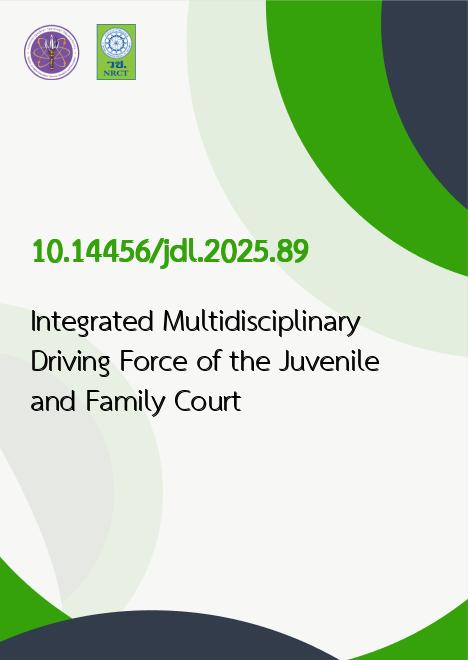
|
Integrated Multidisciplinary Driving Force of the Juvenile and Family Court |
|---|---|
| รหัสดีโอไอ | |
| Creator | Wichai Loysuangsin |
| Title | Integrated Multidisciplinary Driving Force of the Juvenile and Family Court |
| Publisher | Buddhist Studies Foundation Wat Buranasiri Matayaram |
| Publication Year | 2568 |
| Journal Title | Journal of Dhamma for Life |
| Journal Vol. | 31 |
| Journal No. | 1 |
| Page no. | 529-543 |
| Keyword | Integrated Driving Force, Multidisciplinary Driving Force, Counseling Center, Juvenile and Family Court |
| URL Website | https://so08.tci-thaijo.org/index.php/dhammalife |
| Website title | https://so08.tci-thaijo.org/index.php/dhammalife/article/view/3749 |
| ISSN | 2822-048X |
| Abstract | This study is a qualitative study using in-depth interviews with key informants, which consists of judges, directors, associate judges, and psychologists for the Juvenile and Family Court, with a total of 17 people. The objective is to study the elements and model of the integrated driving force of the Juvenile and Family Court and to present the multidisciplinary integrated driving force of the Juvenile and Family Court. The results of the study found that the components of the integrated driving forceincluded: (1) juvenile and family court; (2) relevant government organizations; (3) private sector organizations; and (4) civil society organizations. These organizations had driven in the public sector management model according to the strategic plan forthe Thai bureaucracy system development (2013 -2018) in strategic issues 4 and 5, which aimed to promote collaboration within the bureaucracy to solve the problem of separation of operations between agencies. This strategic plan also aimed to drive the country's policies/strategies and the efficient use of resources, including promoting a collaborative governance system between the government, the private sector, and the public sector. It also created a cooperation or partnership between the government and other sectors. Meanwhile, the integrated multidisciplinary driving force of the Juvenile and Family Court were driven by 4 groups: (1) Legal professionals; (2) multidisciplinary specialists; (3) psychologists; (4) social welfare organizations. In addition, it was found that family institutions were the most important support in monitoring and training of children and youth during the process. |